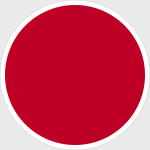Hobby Master HA2009 Imperial Japanese Navy Nakajima B5N1 "Kate" Torpedo Bomber - Aircraft Carrier Ryujo, 1942 (1:72 Scale)
"Tora! Tora! Tora!"
- Predetermined Japanese signal indicating they had achieved complete surprise leading up to the aerial assault at Pearl Harbor, December 7th, 1941
 The Nakajima B5N (Allied reporting name: Kate) was the Imperial Japanese Navy's standard torpedo bomber for the first years of World War II. While the B5N was substantially faster and more capable than its Allied counterparts, the TBD Devastator and Fairey Swordfish, it was close to obsolescence by the time of the Pearl Harbor Attack. Nevertheless, the B5N operated throughout the whole war. Although primarily used as a carrier-based aircraft, it was also used as a land-based bomber on occasions. The B5N had a crew of 3: pilot, navigator/bombardier/observer, and radio operator/gunner.
The Nakajima B5N (Allied reporting name: Kate) was the Imperial Japanese Navy's standard torpedo bomber for the first years of World War II. While the B5N was substantially faster and more capable than its Allied counterparts, the TBD Devastator and Fairey Swordfish, it was close to obsolescence by the time of the Pearl Harbor Attack. Nevertheless, the B5N operated throughout the whole war. Although primarily used as a carrier-based aircraft, it was also used as a land-based bomber on occasions. The B5N had a crew of 3: pilot, navigator/bombardier/observer, and radio operator/gunner.
The B5N was designed by a team led by Katsuji Nakamura in response to a 1935 specification by the Navy for a torpedo bomber to replace the Yokosuka B4Y. Internally designated Type K by Nakajima, it successfully competed with the Mitsubishi B5M for a production contract. The first prototype flew in January 1937 and was ordered into production soon afterwards with the full designation Type 97 Carrier Attack Bomber.
The B5N soon saw combat, first in the Sino-Japanese War, where combat experience revealed several weaknesses in the original B5N1 production model. These were mainly concerned with the lack of protection that the design offered its crew and fuel tanks. Keen to maintain the high performance of the type, the Navy was reluctant to add weight in the form of armour, and instead looked to obtaining a faster version of the aircraft in the hopes of out-running enemy fighters. The B5N2 was given a much more powerful engine, and various modifications were made to streamline it. Although its performance was only marginally better, and its weaknesses remained unremedied, this version replaced the B5N1 in production and service from 1939. It was this version that would be used by the Navy in the attack on Pearl Harbor. Apart from this raid, the greatest successes of the B5N2 were the key roles they played in sinking the US Navy aircraft carriers Yorktown, Lexington and Hornet.
The B5N served as the basis for a follow-on design, the Nakajima B6N, which eventually replaced it in front-line service. The B5N continued to fly in secondary roles, such as training, target towing, and anti-submarine warfare. Some of the aircraft used for this latter purpose were equipped with early radars and magnetic anomaly detectors. B5Ns were also used as bombers during the unsuccessful defense of the Philippines in October 1944.
Pictured here is a 1:72 scale replica of an Imperial Japanese Navy Nakajima B5N1 "Kate" torpedo bomber that was embarked upon the aircraft carrier Ryuho during April 1942.
Sold Out!
Dimensions:
Wingspan: 8-1/2-inches
Length: 5-3/4-inches
Release Date: June 2015
Historical Account: "Dragon Phoenix" - The Ryuho ("Dragon phoenix") was a Japanese light aircraft carrier. Sole ship of her class, she was converted from a submarine tender. During World War II she operated mainly as an aircraft transport but did participate in the First Battle of the Philippine Sea.
On December 31st, 1944, Ryūhō sailed for Taiwan with a load of 58 Ohka kamikaze planes. Accompanying her were nine empty oil tankers bound for Singapore, and the destroyers Hamakaze, Isokaze, Yukikaze, Shigure and Hatakaze.
Upon reaching Taiwan and unloading her cargo, Ryuho was among the targets of a major series of American carrier-based air raids all over the island. Twelve TBF Avengers attacked her but none scored a hit, and Ryuho's gunners shot down one of them. Ryuho departed for Japan on January 2nd, 1945, escorted by Isokaze; when she arrived at Kure on 18 January, Ryuho also gained the distinction of being the last Japanese aircraft carrier to venture outside the home waters of Japan.
Ryuho was attacked by Task Force 58 aircraft on March 19th near Kure, suffering hits by three 500 lb (227 kg) bombs and two 5.5-inch (140 mm) rockets. The damage was severe: the flight deck bulged upward between the two elevators, the No. 1 boiler was punctured by a bomb fragment, the stern settled six feet (2 m) into the water, and a raging fire broke out. Twenty crewmen were killed and 30 were wounded. Upon returning to Kure on April 1st, Ryuho was considered to be a total loss. She was struck from the Navy List on November 30th and scrapped in 1946.


